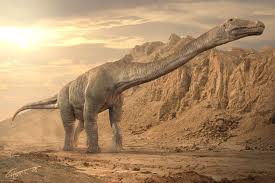Discovery of a plant-eating dinosaur in Antarctica
Tuesday, December 20th, 2011 6:41:29 by Taimoor Tariq
Discovery of a plant-eating dinosaur in Antarctica
For the first time, the presence of large bodied herbivorous dinosaurs has been found in the icy landscape of Antarctica.
Scientists have identified the dinosaur as the sauropoda which was the most diverse and geographically widespread species of herbivorous dinosaurs. However, this species was never discovered in Antarctica although it had been recovered from all continents.
Dr Ignacio Alejandro Cerda from CONICET Argentine and his team where behind this discovery. This species of reptiles achieved global distribution during the Late Cretaceous period.
Sauropoda is the second most diverse group of dinosaurs, with more than 150 recognized species. It includes the largest terrestrial vertebrates that ever existed. Although many sauropod remains have been discovered in North and South America, Africa, Asia,
Australia and Europe, there is no previous record of sauropoda in Antarctica. Other important dinosaur discoveries have been made in Antarctica in the last two decades — principally in the James Ross Basin.Dr. Cerda and colleagues report the first finding
of a sauropod dinosaur from this continent and provide a detailed description of an incomplete middle-tail vertebra, recovered from James Ross Island. The specific size and morphology of the specimen, including its distinctive ball and socket articulations,
lead the authors to identify it as an advanced titanosaur.
These titanosaurs originated during the Early Cretaceous period and until the extinction of all non-bird dinosaurs, were the predominant group of sauropod dinosaurs.
Despite being the oldest and the most widespread dinosaurs of their era, titanosaurs’ origin and dispersion are yet to be completely understood.
The authors conclude: "Our discovery, and subsequent report, of these sauropod dinosaur remains from Antarctica improves our current knowledge of the dinosaurian faunas during the Late Cretaceous on this continent."*The Cretaceous Period spanned 99.6-65.5
million years ago, and ended with the extinction of the dinosaurs.
The Cretaceous Period spanned almost 99.6-65.5 million years back and ended with the extinction of dinosaurs which in turn marked the advent of the Ice Age.
Tags: antarctica, conicet, dinosaur, ignacio alejandro cerda, titanosaurShort URL: https://www.newspakistan.pk/?p=6716

















